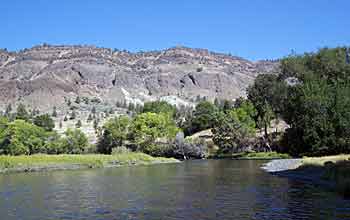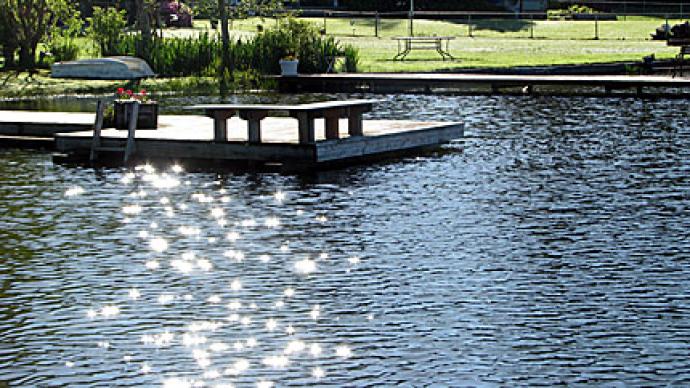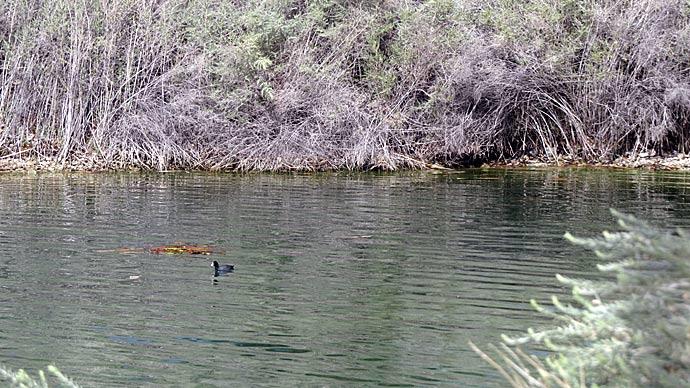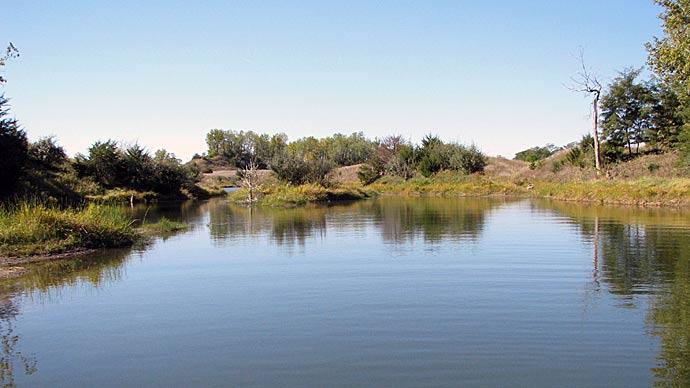
Water is an amazing substance. Scientists call it the "universal solvent." Whatever can dissolve into water, will. Think about that statement. Look at your pond's water. One of the first agenda items for pond managers is to understand the composition of water. When we analyze water, we are looking at what is dissolved in water. We look for metals, minerals, cations, anions. Iron, magnesium, phosphorus, calcium. Bicarbonate, carbonate, salts. Important stuff. From a standard water analysis, crucial decisions can be made. Sometimes we amend water with lime, or increase hardness, or decide what plants to use, based on chemistry of what's dissolved in water.
In smaller ponds, water chemistry plays a huge role in management. Small ponds can change dramatically, and quickly, with a simple rainfall event.
I'll never forget a big lesson in water chemistry. In May, 1990, I delivered a few fish to stock a pond on the high plains of northwest Texas. The landowner had filled his new, small pond with well water. As we made our way across a pasture, we drove across the dam of a different small pond which had been the victim of a three year extended drought. Water level was as low as it had ever been for this little mudhole...maybe five feet deep in a pond with a capacity to hold twenty feet of water.
As we made our way to the new pond behind the man's house, we could see black clouds boiling in the distance. A west Texas thunderstorm was brewing.
We decided to wait a bit to stock his fish.
Good decision.
We made an about-face as winds whipped the prairie with dust. If you have never experienced a west Texas thunderstorm, here's a brief description.
The pasture road was slightly bumpy, but when you accelerate, looking at a rapid cloud chasing you, the bumps go away. We accelerated. Lightning bolts struck the ground nearby, and the temperature dropped fifteen degrees in five minutes. We parked inside a massive barn, just in time. Rain drops big as silver dollars splattered the thirsty ground, just behind winds gusting beyond fifty miles an hour. In a matter of minutes, we couldn't hear ourselves speak over the ear-wrenching noise of golf ball sized hail banging the Quonset-hut style barn. Ever see hail bounce on the ground? We did.
As quickly as it came, the violent wind swept storm blew eastward, to bang its way onto other people.
Three inches of rain and hail hit the ground in less than thirty minutes.
What we saw next was amazing. Hailstones flowed down ditches, stacking up, and moving into the formerly almost-dry pond. We watched the pond rise five feet in less than two hours. But, not only did the pond rise, it was filled at the surface with floating balls of ice. Not long after that, fish were piping at the top, acting like they were suffocating.
They were.
Two big things happened.
First, bail had dramatically changed water temperatures. Water temps plummeted twenty five degrees. That's enough to kill fish.
Secondly, water chemistry was dramatically altered.
Here's how.
When water evaporates, it's the only compound which leaves. As water exits, all the stuff dissolved in it stays behind. So, if half the water leaves, twice the concentrations of metals and minerals can be measured.
In the case of our landowner in Texas, fresh rainfall rapidly diluted heavy concentrations of dissolved minerals and metals in his water. Even without the hail, his fish would have been in trouble.
Here's the moral of the story. Yearly water chemistry analysis gives you a checks and balance to prevent a rapid chemistry change from otherwise refreshing rains. Look at pH, hardness, alkalinity. If you see gradual changes over time, especially when water levels drop, pay attention. You may want to amend your water, to prevent stress under conditions we might otherwise consider "normal."
Fish adjust to gradual changes, and can live in different types of "normal" conditions. But, when "normal" changes rapidly, watch out.
Reprinted with permission from Pond Boss Magazine



